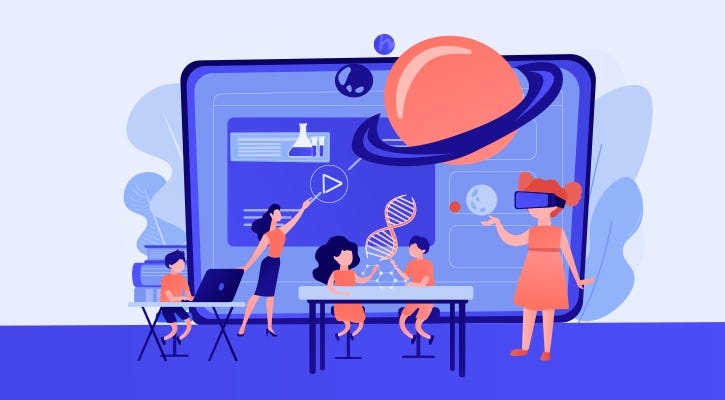In today’s fast-paced, technology-driven world, learning artificial intelligence (AI) has become one of the most sought-after skills. Whether you’re looking to start a new career, enhance your current job prospects, or simply explore this fascinating field, diving into AI from scratch might seem overwhelming at first. But fear not—this guide will walk you through each step to help you get started on your AI learning journey.
1. Understand the Basics of AI
Before jumping into coding or advanced AI concepts, it’s essential to grasp the basics. AI refers to machines designed to mimic human intelligence, including tasks such as decision-making, problem-solving, and pattern recognition.
Familiarize yourself with key AI subfields:
- Machine Learning (ML): The process by which AI systems learn from data and improve over time.
- Natural Language Processing (NLP): AI’s ability to understand and generate human language.
- Computer Vision: AI that interprets and makes decisions based on visual data.
- Deep Learning: A subset of ML, which uses neural networks with multiple layers to analyze data.
You can start by reading articles or watching introductory videos on these topics to build a foundational understanding.
2. Learn a Programming Language
AI development relies heavily on programming. The most popular and beginner-friendly language for AI is Python, thanks to its readability and the wealth of AI-related libraries available.
Other useful languages include:
- R: Great for data analysis and statistical computing.
- Java: Commonly used for large-scale AI projects.
- C++: Sometimes used for faster execution of AI algorithms.
Start with Python and focus on understanding basic concepts like variables, loops, functions, and data structures. There are plenty of free online resources and tutorials available for Python beginners.
3. Familiarize Yourself with AI Tools and Libraries
Once you have a good grasp of programming, the next step is to explore AI libraries and tools. Here are some essential Python libraries you should learn:
- TensorFlow: A popular open-source library for building machine learning models.
- Keras: A high-level neural networks API that runs on TensorFlow, making it easier to design and train models.
- PyTorch: Another deep learning framework known for its flexibility and ease of use.
- scikit-learn: A simple yet powerful library for machine learning algorithms like regression, classification, and clustering.
Understanding how to use these tools will help you implement AI algorithms and models efficiently.
4. Start with Simple AI Projects
Theory is important, but hands-on practice is where the real learning happens. Begin by working on small, manageable AI projects. For example, you could create a basic chatbot, build a sentiment analysis tool, or develop a simple image classification model.
Working on projects allows you to apply your knowledge in real-world scenarios and reinforces what you’ve learned. Plus, you’ll start building a portfolio that you can showcase to potential employers or collaborators.
5. Take Online Courses
To guide you through more structured learning, many reputable platforms offer AI courses for beginners. Here are a few highly recommended ones:
- Coursera’s AI for Everyone by Andrew Ng: A beginner-friendly course that covers the fundamentals of AI.
- Udacity’s AI Programming with Python: Focused on teaching Python programming skills with AI applications.
- edX’s Principles of Machine Learning: A comprehensive introduction to machine learning concepts.
These courses will teach you both theory and practical skills, and many include hands-on projects to enhance your learning experience.
6. Dive into Machine Learning
Once you’ve completed some beginner projects and courses, it’s time to dive deeper into machine learning (ML), one of the core areas of AI. ML involves teaching machines to learn from data and make predictions or decisions without explicit programming.
To learn ML, focus on:
- Supervised Learning: Training models using labeled data.
- Unsupervised Learning: Teaching models to find patterns in unlabeled data.
- Reinforcement Learning: Training models based on rewards and penalties, simulating how humans learn from experience.
You can also explore platforms like Kaggle, where you can participate in ML competitions and find datasets to practice with.
7. Study Deep Learning and Neural Networks
Deep learning, a subset of ML, is where much of AI’s most exciting advancements are happening. It involves using neural networks with multiple layers to mimic the way the human brain processes information.
Learn how neural networks work, how to structure them, and how to use tools like TensorFlow and PyTorch to create deep learning models. You’ll encounter concepts like convolutional neural networks (CNNs) and recurrent neural networks (RNNs), which are vital for applications in computer vision and NLP.
8. Explore Real-World Applications of AI
To solidify your knowledge, explore real-world use cases and applications of AI. Look at how AI is transforming industries like healthcare, finance, automotive, and education. For example:
- AI-powered diagnostic tools in healthcare.
- Predictive analytics in finance.
- Autonomous vehicles in the automotive industry.
- Personalized learning systems in education.
Understanding these applications can give you valuable context and inspire you to think creatively about how to apply AI in your own projects.
9. Join AI Communities
Learning AI doesn’t have to be a solo journey. There are vibrant AI communities where learners and professionals come together to share knowledge, solve problems, and collaborate. Join AI forums, attend webinars, participate in coding challenges, and connect with like-minded individuals.
Here are a few places to start:
- Kaggle: A great community for data science and machine learning enthusiasts.
- Reddit’s r/MachineLearning: A forum where AI learners and experts discuss concepts, tools, and news.
- AI Meetup Groups: Many cities have AI or data science meetups, and there are also online events you can join.
10. Stay Updated with AI Trends
AI is a rapidly evolving field, so it’s important to keep up with the latest trends and developments. Subscribe to AI-related blogs, follow influential AI researchers, and regularly check AI journals and publications. This will help you stay informed about breakthroughs, new tools, and innovative applications in the field.
Final Thoughts
Learning AI from scratch may seem challenging, but by following these steps, you’ll be able to build a strong foundation and develop the skills needed to succeed. Start with the basics, dive into programming, practice with real projects, and take advantage of the wealth of online resources available. With dedication and curiosity, you’ll be well on your way to mastering AI.
Good luck on your AI learning journey!





